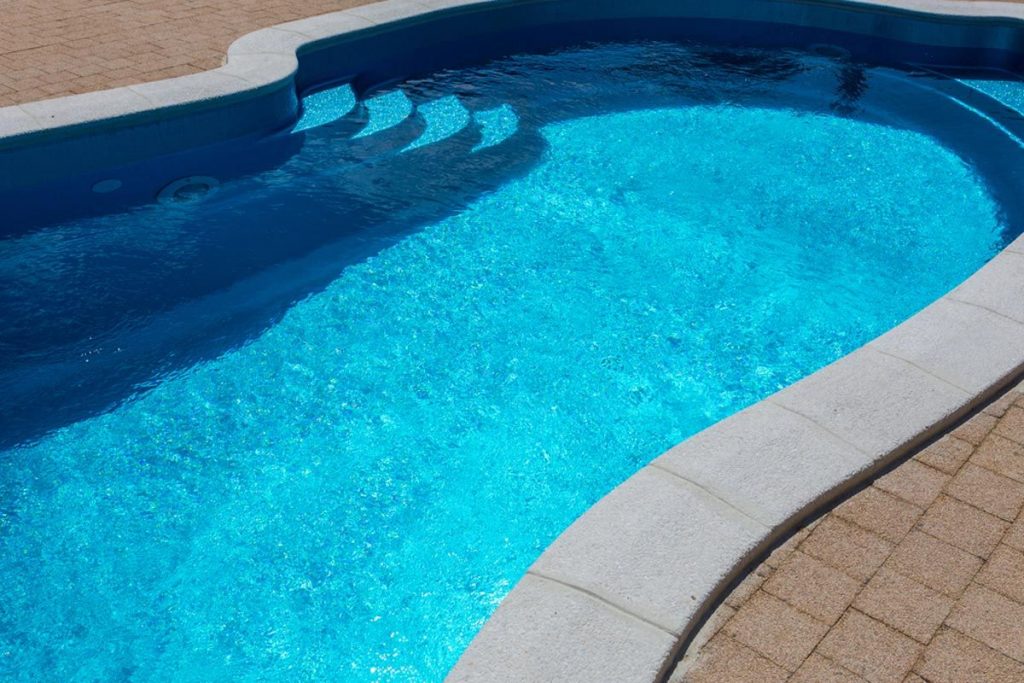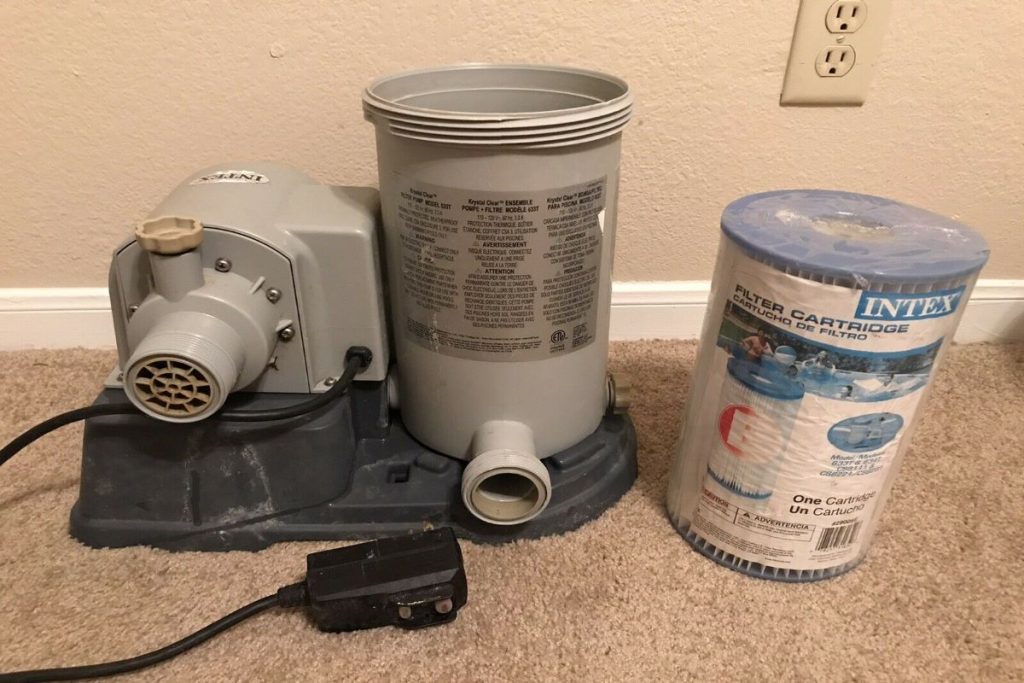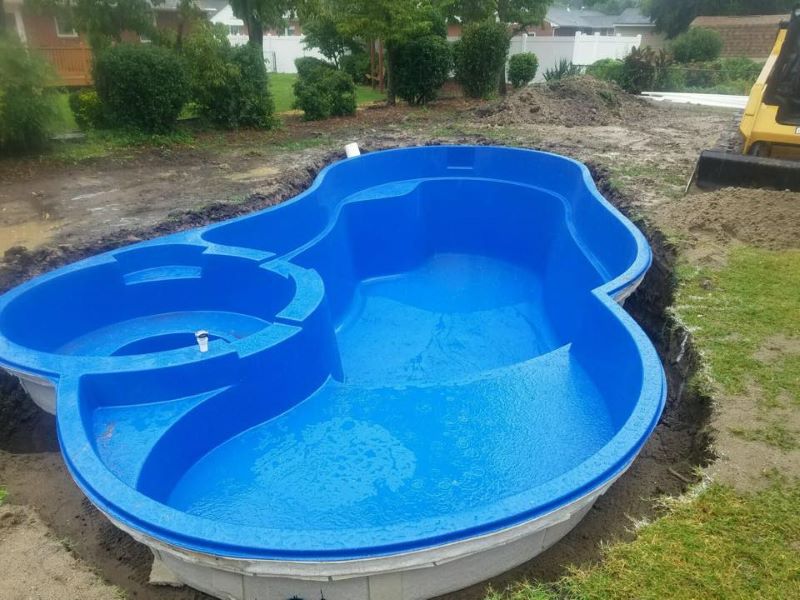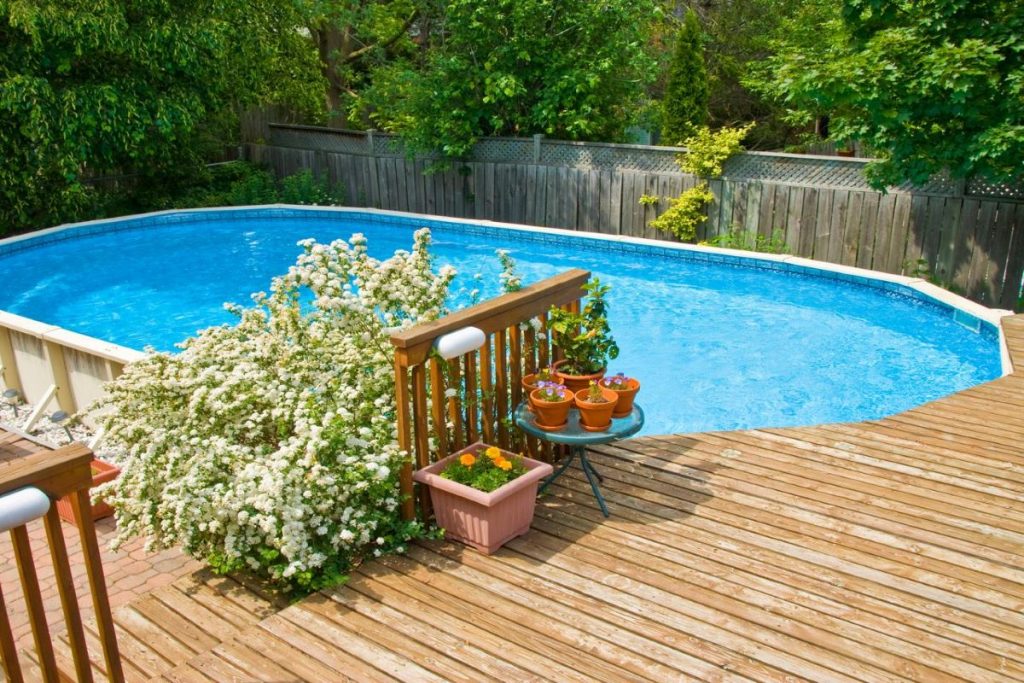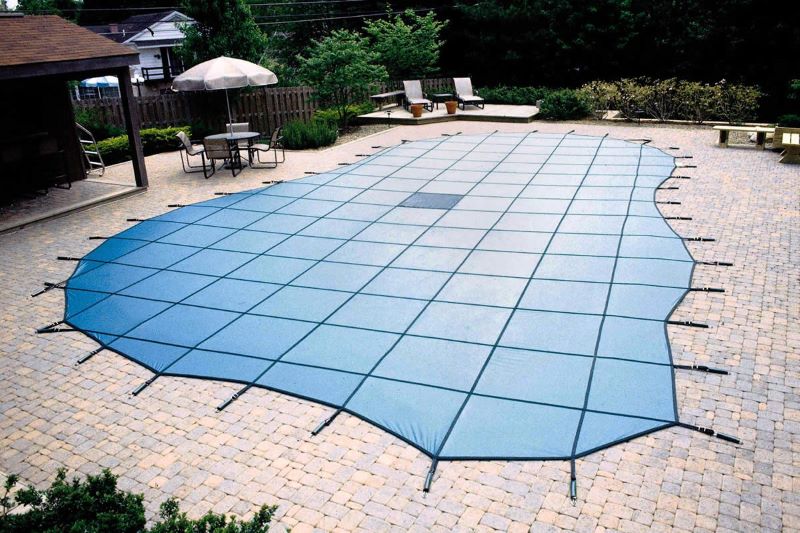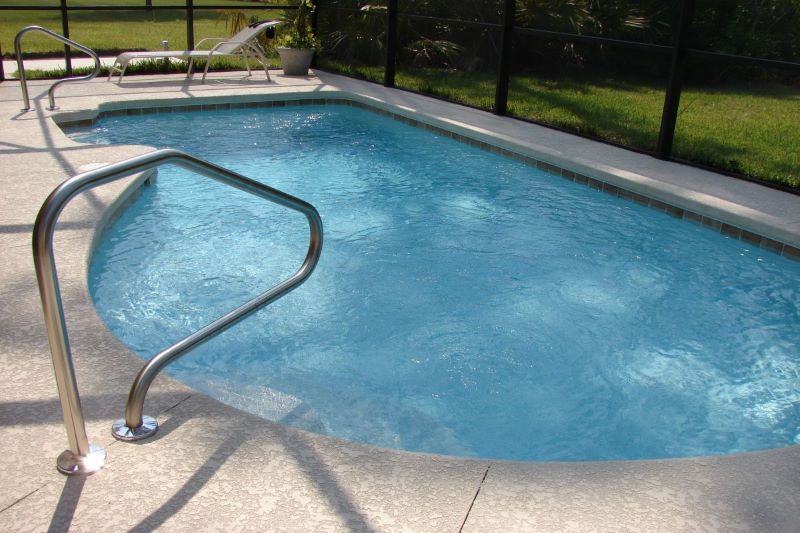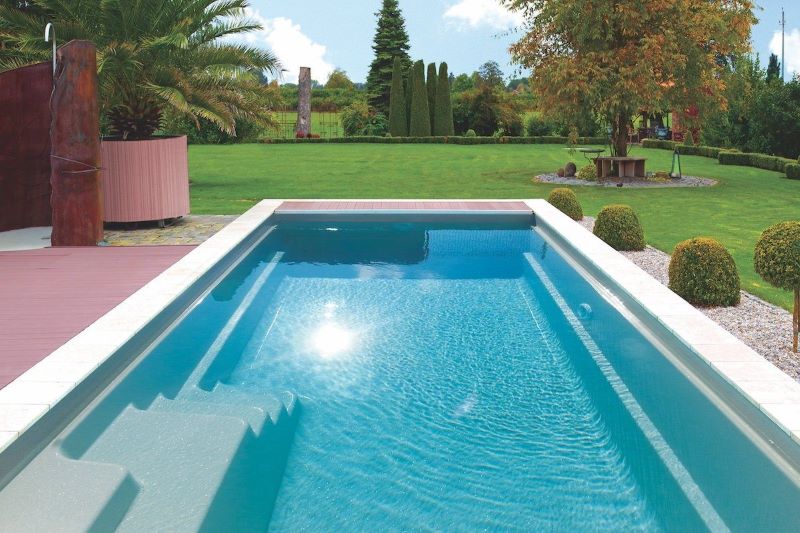Table of Contents
A pristine swimming pool is a source of joy and relaxation for homeowners, but the presence of unsightly stains can mar this experience. From iron stains to algae buildup, pool owners often encounter a range of staining issues that can be challenging to remove. In this article, we will explore various types of pool stains, their causes, and effective methods to tackle them without the need to drain your pool.
Understanding Different Types of Pool Stains
Iron Stains in Gunite Pools:
Iron stains can manifest as reddish or brownish discolorations on the pool’s surface, particularly in gunite pools. These stains are typically caused by the high iron content in the pool water, often resulting from the use of well water or corroded metal equipment.
Yellow and Brown Stains:
Yellow and brown stains can be attributed to organic matter like leaves and debris settling on the pool floor or walls. These stains may also be due to the presence of tannins, which are naturally occurring compounds found in plants.
Metal Stains:
Metal stains encompass a variety of stains caused by metals like copper, manganese, and iron leaching into the pool water. These stains can vary in color and appearance but are commonly bluish-green or greenish-brown.
Algae Stains on Pool Walls:
The algae growth can lead to greenish or blackish stains on pool walls. Algae thrive in environments with poor circulation and inadequate sanitation.
Rust Stains:
Rust stains often result from metal objects or equipment corroding in or around the pool. These stains can be reddish-brown and appear as streaks or spots.
Pool Plaster Stains:
Stains on pool plaster can be caused by various factors including minerals, metals, or organic matter infiltrating the plaster’s porous surface.
Copper Stains:
Copper stains manifest as blue or blue-green discolorations in the pool. Copper can enter the pool water from corroded pipes or copper-based algaecides.
Removing Pool Stains Without Draining

Identifying the Stain:
Before attempting to remove any stain, it’s crucial to accurately identify the type of stain to determine the most effective removal method.
Using Ascorbic Acid:
Ascorbic acid, commonly found in vitamin C, can be effective in removing metal-based stains from the pool. It works by reducing metal compounds, making them soluble and easier to filter out.
Targeted Stain Removers:
There are commercial stain removers available that are formulated to tackle specific types of stains. These products can often be applied directly to the stain and scrubbed gently.
Stain Prevention:
Regularly testing and balancing the pool water can prevent the buildup of metals and minerals that cause stains. Proper pool maintenance, including regular brushing and vacuuming, can also help prevent stains from forming.
Professional Help:
For stubborn stains or cases where multiple stain types are present, seeking the assistance of a professional pool maintenance service is advisable.
Special Considerations for Pool Liners and Fiberglass Pools
Pool Liner Stain Removers:
When dealing with pool liners, it’s crucial to use stain removers that are compatible with the liner material. Harsh chemicals can damage or fade the liner.
Fiberglass Pool Stains:
Fiberglass pools can also experience stains, typically caused by minerals and metals. Similar stain removal methods, such as using ascorbic acid, can be applied to fiberglass pools.
Conclusion
Maintaining a sparkling pool free of stains requires vigilance, proper water chemistry, and regular cleaning. Understanding the types of stains and their underlying causes is the first step towards effective removal. By employing the methods and precautions discussed in this article, you can enjoy a pristine pool environment that’s inviting and enjoyable for everyone. Remember, prevention and routine care are the keys to keeping your pool looking its best.
Questions Related to Pool Stains
How To Remove Algae Stains From Pool Walls?
Algae growth is a common issue in swimming pools, and it can lead to unsightly stains on the pool walls. These stains can be greenish, blackish, or even brownish, depending on the type of algae present. Removing algae stains from pool walls requires a combination of proper cleaning techniques and maintaining proper pool chemistry. Here’s a step-by-step guide to help you effectively remove algae stains from your pool walls:
1. Identify the Algae Type:
Before proceeding with stain removal, identify the type of algae causing the stains. Different types of algae may require slightly different treatment approaches. Green algae, black algae, and mustard algae are some common types that can stain pool walls.
2. Gather the Necessary Supplies:
You’ll need a few supplies to effectively remove algae stains:
- Pool brush with nylon bristles
- Pool vacuum or automatic pool cleaner
- Algae-specific pool cleaner or algaecide
- Pool water testing kit
- Pool shock (if necessary)
- Safety goggles and gloves
3. Balance Pool Chemistry:
Test the pool water to ensure that the pH, chlorine levels, and alkalinity are within the recommended ranges. Properly balanced water helps prevent algae growth and aids in stain removal.
4. Brush and Vacuum:
Start by brushing the pool walls vigorously using a pool brush with nylon bristles. This helps loosen the algae from the surface. Use a pool vacuum or an automatic pool cleaner to remove the dislodged algae particles from the pool water.
5. Apply Algae-Specific Cleaner or Algaecide:
Select an algae-specific pool cleaner or algaecide based on the type of algae you’re dealing with. Follow the manufacturer’s instructions for application. Some algaecides may require you to dilute the solution before adding it to the pool.
6. Scrub the Stains:
After applying the algaecide, use the pool brush to scrub the stained areas. Focus on the areas with the most noticeable stains. The algaecide will help break down the algae and make it easier to remove.
7. Wait and Monitor:
Depending on the severity of the stains, you might need to wait for a certain period as recommended by the product instructions. During this time, the algaecide will work to eliminate the remaining algae and loosen the stains.
8. Brush and Vacuum Again:
After the waiting period, brush the pool walls again and use the pool vacuum or cleaner to remove any remaining algae debris and particles.
9. Shock the Pool (if necessary):
If the algae infestation was severe, it’s a good idea to shock the pool. Pool shock is a highly concentrated chlorine treatment that helps sanitize the water and eliminate any remaining algae or bacteria.
10. Regular Maintenance:
To prevent future algae growth and stains, maintain proper pool water chemistry, regular filtration, and circulation. Brush the pool walls and vacuum the pool regularly to minimize the chances of algae taking hold again.
11. Consider Preventive Measures:
You might want to consider using an algaecide or other preventive treatments to inhibit future algae growth. Following a consistent maintenance routine will help you avoid algae stains in the long run.
Conclusion
Removing algae stains from pool walls requires a systematic approach, involving proper cleaning, chemical treatment, and preventive measures. By following these steps and maintaining a well-balanced pool environment, you can ensure your pool walls remain free of unsightly algae stains, providing you with a clean and inviting swimming area for your enjoyment.
How To Get Rid Of Stains On Pool Floor?
Removing stains from the pool floor is a process that requires diligence and careful attention to pool maintenance. By identifying the type of stain, using appropriate treatment methods, and maintaining proper water chemistry, you can keep your pool floor looking clean and inviting. Remember that prevention is key, so implementing a regular cleaning routine and practicing proper pool care will help you avoid future stains and maintain the beauty of your pool.
What Do Metal Stains Look Like In A Pool?
Metal stains in a pool can appear in various colors and forms, depending on the type of metal causing the stain and the concentration of minerals in the pool water. Here are some common types of metal stains and how they might appear in a pool:
- Copper Stains: Copper stains typically appear as blue or blue-green discolorations on the pool surface. These stains can be particularly noticeable on light-colored pool finishes. Copper stains often result from the corrosion of copper-based equipment, such as pipes, heaters, or algaecides.
- Iron Stains: Iron stains can manifest as reddish, brownish, or rust-colored spots or streaks on the pool walls, floor, or other surfaces. These stains are often caused by high iron content in the pool water, which can come from various sources, including well water or corroded metal fixtures.
- Manganese Stains: Manganese stains can resemble dark brown or black stains on the pool surface. These stains are less common than copper or iron stains but can still result from elevated manganese levels in the water.
- Calcium Stains: While not strictly metal stains, calcium deposits can form white or grayish stains on pool surfaces, especially near the waterline or areas with poor water circulation. High calcium hardness levels can lead to these stains.
- General Metal Staining: In some cases, metal stains can result in a mix of colors, including bluish-green, brownish, or reddish shades. The appearance can vary depending on the combination of metals and minerals present in the water.
- Stains with Specific Shapes: Metal stains might appear as splotches, streaks, lines, or irregular shapes on the pool surface. Their appearance can also be influenced by water movement, pool chemistry, and exposure to sunlight.
It’s important to note that identifying the exact type of metal causing the stain can be challenging based solely on visual appearance. To effectively treat and prevent metal stains, it’s recommended to test the pool water for metal content and consult with a pool professional who can provide appropriate guidance and solutions. Regular water testing, proper water chemistry maintenance, and using sequestrants or metal removers can help prevent the formation of metal stains and keep your pool looking clean and inviting.
How To Remove Stains From Pool Plaster?
Removing stains from pool plaster requires a systematic approach to identifying the type of stain and applying appropriate cleaning methods without damaging the plaster surface. Here’s a step-by-step guide to help you remove stains from your pool plaster:
1. Identify the Type of Stain:
Before starting the stain removal process, identify the type of stain you’re dealing with. Common types of stains on pool plaster include metal stains (copper, iron), organic stains (leaves, algae), and mineral stains (calcium, scale).
2. Gather Necessary Supplies:
You’ll need the following supplies for stain removal:
- Pool brush with nylon or stainless steel bristles (depending on plaster type)
- Pool vacuum or automatic pool cleaner
- Stain-specific treatment chemicals (as needed)
- Pool water testing kit
- Safety goggles and gloves
3. Test and Balance Pool Chemistry:
Ensure the pool water’s pH, alkalinity, and calcium hardness are within the recommended ranges. Proper water chemistry helps prevent future staining and supports effective stain removal.
4. Brush and Vacuum:
Start by brushing the stained area gently using a pool brush with appropriate bristles (nylon for standard plaster, stainless steel for pebble, or exposed aggregate). Brushing helps loosen debris and stains from the plaster surface. Vacuum the loosened debris using a pool vacuum or automatic cleaner.
5. Apply Stain-Specific Treatment:
For different types of stains, use these treatments:
- Metal Stains: If the stain is caused by metals like copper or iron, use a metal sequestrant or stain remover. Follow the manufacturer’s instructions for application.
- Organic Stains: Organic stains can be treated with an enzyme-based pool cleaner. These cleaners help break down organic matter for easier removal.
- Mineral Stains: For calcium or scale stains, use a commercial calcium remover or diluted muriatic acid (hydrochloric acid). Be cautious when using acids and follow safety guidelines.
6. Apply the Treatment:
Follow the product instructions for the stain-specific treatment you’re using. Apply the treatment to the stained area, ensuring even coverage.
7. Scrub and Wait:
Gently scrub the treated area using the pool brush to help the treatment penetrate the stain. Depending on the product, you may need to wait for a specified period to allow the treatment to work effectively.
8. Brush and Vacuum Again:
After the waiting period, brush the treated area again and use the pool vacuum or cleaner to remove loosened debris and particles.
9. Repeat as Necessary:
Stubborn stains might require multiple treatment cycles. Be patient and persistent in your efforts.
10. Regular Maintenance:
Prevent future stains by maintaining proper water chemistry, regular filtration, and circulation. Routine brushing and vacuuming will help prevent new stains from forming.
11. Consult Professionals:
If stains are extensive or persist despite your efforts, consider seeking advice from pool professionals who can offer specialized solutions.
Conclusion
Removing stains from pool plaster involves a combination of proper cleaning techniques, stain-specific treatments, and diligent maintenance. By identifying the type of stain and using the appropriate methods, you can restore the beauty of your pool and ensure a clean and inviting swimming environment for years to come.
Does Muriatic Acid Remove Pool Stains?
Yes, muriatic acid can be used to help remove certain types of pool stains, particularly mineral-based stains like calcium deposits and scale. However, it’s important to use muriatic acid cautiously and follow proper safety guidelines.
Muriatic acid should not be used on certain pool surfaces, such as vinyl liners or fiberglass pools, as it can cause damage. Always refer to your pool manufacturer’s guidelines and consult with a professional if you’re unsure.
Does Baking Soda Remove Pool Stains?
Baking soda is not typically used as a primary stain remover for pool stains, especially tough mineral or metal stains. While it can help with general cleaning and maintenance, its effectiveness in removing stains is limited compared to specific stain-removing products or techniques.
Baking soda (sodium bicarbonate) is often used in pools for various purposes, such as raising the alkalinity and pH levels of the water. It can also act as a mild abrasive cleaner, which makes it useful for scrubbing and cleaning pool surfaces. However, its ability to remove stubborn stains, particularly mineral and metal stains, is limited.
Can I use vinegar to clean my pool?
While vinegar is a household product that can be useful for cleaning various surfaces, it’s generally not recommended for cleaning swimming pools. Vinegar is acidic, and using it in a pool can disrupt the pool’s water chemistry and potentially cause imbalances that affect the safety and clarity of the water.
Here’s why you should avoid using vinegar to clean your pool:
- pH Disruption: Vinegar is acidic, and adding it to your pool water can significantly lower the pH level. Proper pH balance is crucial for swimmer comfort, effective chlorine disinfection, and preventing corrosion or scaling on pool surfaces.
- Chemical Imbalance: The introduction of an acidic substance like vinegar can affect the overall balance of your pool’s water chemistry. This includes pH, alkalinity, and calcium hardness, all of which need to be within specific ranges for a safe and comfortable swimming environment.
- Corrosion Risk: Using vinegar in a pool can lead to the corrosion of metal pool components, such as ladders, handrails, and even pool equipment like pumps and heaters.
- Safety Concerns: Mixing vinegar with other pool chemicals, like chlorine, can produce harmful fumes. Additionally, the addition of acidic substances can irritate swimmers’ skin, eyes, and mucous membranes.
Can I Use Bleach In My Pool?
Yes, you can use bleach in your pool, but it should be used cautiously and in specific situations. Bleach, which contains sodium hypochlorite, is a chlorine-based disinfectant commonly used for sanitizing and cleaning. However, there are some important considerations to keep in mind when using bleach in a pool:
1. Emergency Disinfection: In emergency situations where the pool’s regular chlorine supply is unavailable or insufficient, bleach can be used to maintain sanitation temporarily. Bleach can help kill harmful microorganisms and prevent the growth of algae.
2. Proper Dilution: If using bleach, it must be diluted properly before adding it to the pool water. Calculate the required amount based on your pool’s size and current chlorine levels. Follow the instructions on the bleach container for dilution ratios.
3. No Fragrances or Additives: Use only plain, unscented bleach without any additional fragrances, additives, or thickeners. These additives could affect pool water chemistry and clarity.
4. Measuring and Monitoring: Precise measurement is important when adding bleach to a pool. Overdosing can lead to imbalanced water chemistry, skin and eye irritation, and other issues. Regularly monitor chlorine levels to ensure they remain within recommended ranges.
5. Safety Precautions: When handling bleach, wear appropriate safety gear, such as gloves and safety goggles. Bleach is a strong chemical and can cause skin and eye irritation.
6. Not for Regular Use: While bleach can provide temporary chlorine disinfection, it’s not recommended for regular or long-term use in pools. It lacks stabilizers that help chlorine maintain its effectiveness against sunlight. Using bleach for extended periods could lead to rapid chlorine loss and increased maintenance needs.
7. Consider Stabilized Chlorine: For ongoing pool maintenance, it’s better to use stabilized chlorine products specifically designed for pools. These products contain stabilizers to protect chlorine from degradation due to sunlight.
8. Consult with Professionals: If you’re unsure about using bleach in your pool or need advice on pool maintenance, consult with pool professionals or follow manufacturer recommendations.
In summary, while bleach can be used in emergency situations, it’s not the best choice for regular pool maintenance due to its lack of stabilizers and potential imbalances it can introduce. To maintain your pool’s water chemistry, clarity, and safety, it’s advisable to use appropriate pool chemicals designed for that purpose.


